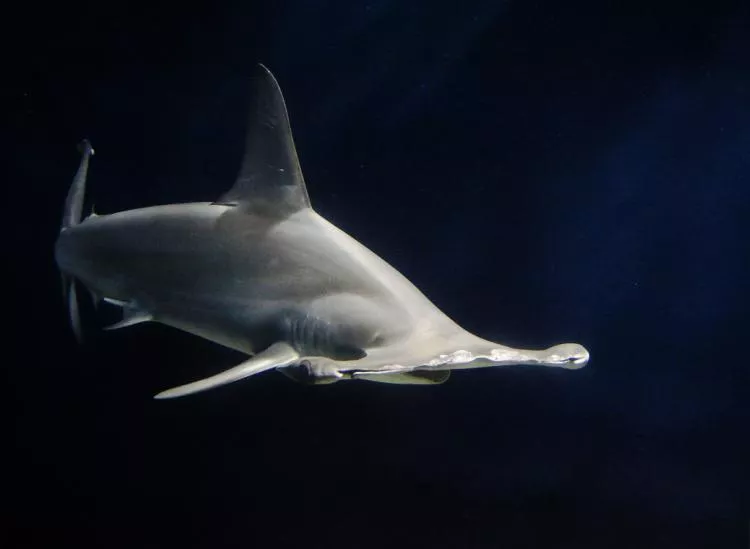How hammerhead sharks sniff out their prey
Exciting study manages to combine cutting-edge 3D imaging of 50-year-old museum specimens, with wild observations of living sharks and experimental flow research to determine how hammerhead nostrils function.
Dr Jonathan Cox from the University’s Department of Chemistry has been working with researchers from the University of Cambridge and the Natural History Museum in London, testing a scale model of a hammerhead shark in a flow tank to see how the water flows around the nasal cavity of its strange flattened head.
The researchers did a CT scan of a shark’s head from the Natural History Museum’s collection. The scan was used to make an accurate model of the head and nasal cavity with a 3D printer. The model featured recently on BBC2’s Museum of Life series about the Natural History Museum.
This is the first time a detailed model of a hammerhead shark’s head has been made to study the creature’s amazing sense of smell. The research is published this month in the scientific journal Comparative Biochemistry and Physiology.
Whereas humans use their lungs like bellows to inhale air through their noses to smell, the hammerhead shark smells as it swims forwards, propelling water through its nose.
Dr Jonathan Cox
“The nasal cavity of the hammerhead is like a labyrinth of pipes, with a central U-shaped channel and lots of smaller channels leading off it. The smaller channels contain the olfactory receptors, and so we’re looking at how the water flows through these channels as the shark swims forwards.
“Sharks sweep their heads from side to side when they swim, so to simulate this we change the angle of the head model in the tank and observe the flow at each angle.”
- Log in to post comments
























